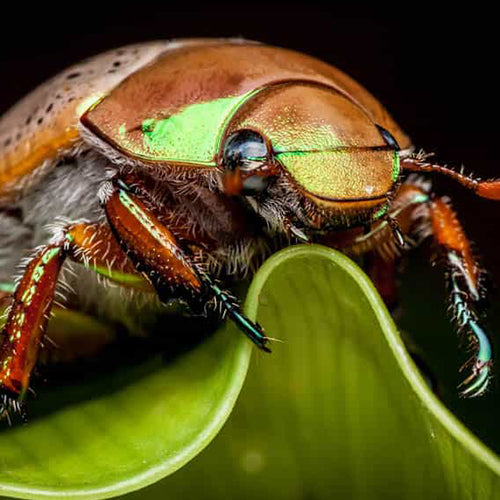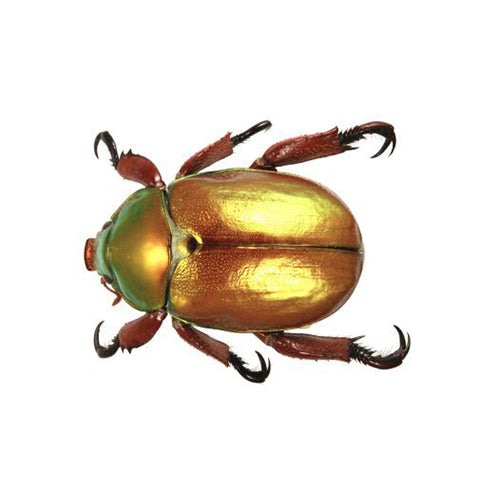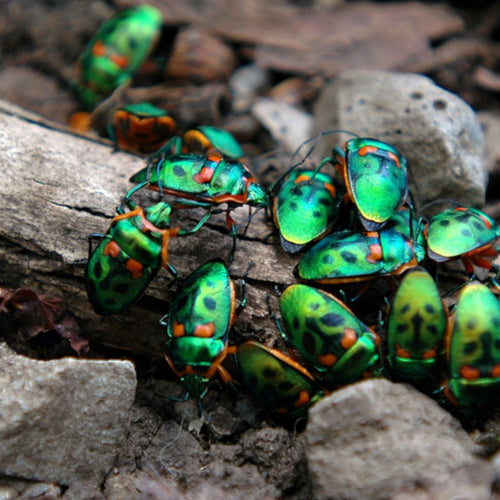Have you noticed a lack of Christmas beetles over the summer period? We have and had a chat in the office about it, hence this blog!
If you grew up in NSW or Queensland, chances are you would have spotted lots of Christmas beetles over the festive season! Typically, the large iridescent beetles would swarm around streetlights and evening summer gatherings in massive quantities.
But now, these bauble-like beetles seem to be in decline. As December rolls around, many people seem to wonder about the absence of the once-thriving beetle.
A 2019 poll of Queenslanders found that more than half of those surveyed either hadn’t seen a Christmas beetle in six months or couldn’t remember the last time they’d spotted one.
So, what happened to the popular Aussie Christmas beetle? Let’s take a look.


What do Christmas beetles look like?
Christmas beetles are instantly recognisable! The chunky, iridescent bugs can be spotted in a range of beautiful metallic hues — including brown, gold, green, and pink. There are around 35 endemic species found in Australia, with the most common ones being Anoplognathus chloropyrus and Anoplognathus montanus. They usually range from 15 to 40 millimetres in length.
Not long ago, massive hordes of Christmas beetles would swarm upon Eucalypt trees — the branches would apparently bend under the sheer weight of the beetles!


Why are they called Christmas beetles?
Christmas beetles have a very unique, shiny appearance — some say they look like flying Christmas ornaments. Plus, Christmas beetles emerge each summer around Christmas time, after waiting underground all year.
For many people in Australia, the annual appearance of these beetles would signify the start of the festive season!


Where have all the Christmas beetles gone?
NSW, and Sydney, in particular, used to be filled with swarms of Christmas beetles. It’s suspected that habitat destruction, due to urban sprawl, is the main reason for the widely reported disappearance of the Christmas beetle. Sydney’s human population grew from just over 2 million in 1960 to almost 5 million in 2020. To make way for millions of new residents, the Christmas beetles’ main food source — Eucalypt trees — have declined.
For example, Cumberland Plain woodland in Western Sydney was once rich with Eucalypts that adult Christmas beetles fed on, but now, it covers less than 10 per cent of its original area.


Climate Change
Climate change is likely to be another factor in the disappearance of the Christmas beetle. As larvae, Christmas beetles dwell underground in the soil for 1-2 years. As they develop into pupae, then adults, they will emerge from the Earth’s surface. But with unusually dry Spring weather, the soil becomes too dry and hard to dig through.
Worldwide, insect populations are declining due to human impacts. Perhaps it’s the nostalgia talking — but we think it’s pretty sad that the Christmas beetle has largely disappeared from sight.
Try having a look around your neighbourhood for some Eucalypt trees — who knows, you might spot some of the beautiful beetles!
If you liked this blog, check out our other Eco News blogs:
Does Your Council Provide Rebates For Eco Friendly Products?

